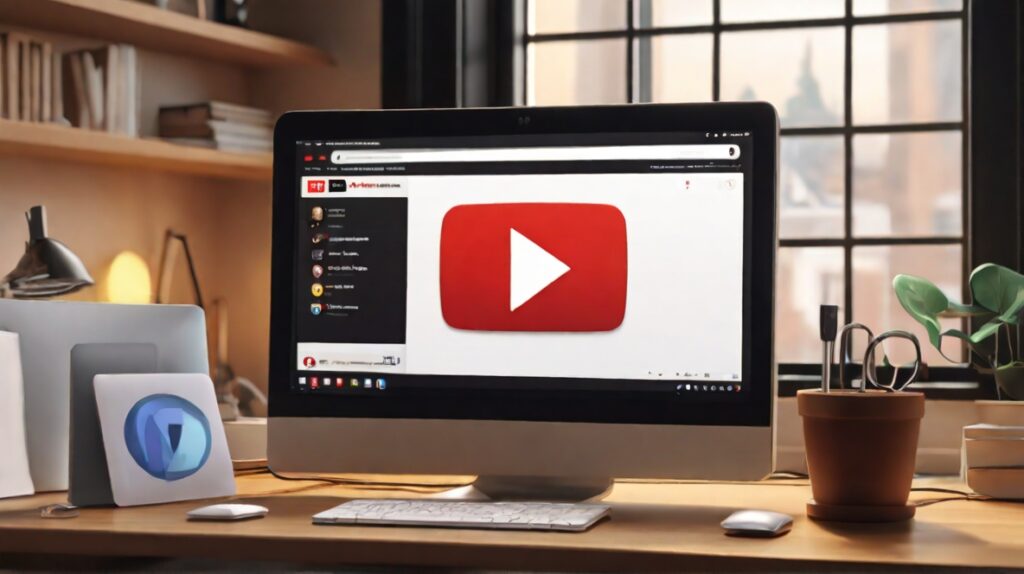Understanding the YouTube Analytics Algorithm

To effectively navigate the world of YouTube and optimize your content for maximum visibility, it's crucial to understand how the YouTube algorithm works. The algorithm plays a significant role in determining which videos are recommended to users and can greatly impact the success of your channel. Let's explore how the YouTube algorithm functions and the factors that influence video recommendations.
How the YouTube Algorithm Works
The YouTube algorithm is a complex system that takes into account numerous factors when determining which videos to recommend to users. It considers a user's watch history, likes and dislikes, and engagement with other videos to create a personalized experience (Shopify Blog). By analyzing this data, the algorithm aims to present users with content that is relevant to their interests and likely to engage them.
One of the key objectives of the YouTube algorithm is to prioritize videos that are more likely to engage and retain viewers (Shopify Blog), as this indicates that the content is valuable and enjoyable. Metrics like watch time and viewer retention rates play a crucial role in determining video rankings. Videos with high watch time and strong viewer retention are more likely to be recommended to a wider audience, increasing their potential for views and engagement.
Factors Influencing Video Recommendations
The YouTube algorithm takes into account various factors when deciding which videos to recommend. These factors include:
-
Engagement Metrics: YouTube considers the number of likes, comments, shares, and subscribers a video has, as well as its overall popularity and relevance to a user's interests (Shopify Blog). Videos with higher engagement are more likely to receive favorable treatment from the algorithm and be recommended to a broader audience.
-
Relevance and Popularity: The algorithm assesses the relevance of a video to a user's interests and the overall popularity of the content. This helps ensure that users are presented with videos that align with their preferences and have gained traction within the platform.
-
Recency of Content: The YouTube algorithm also takes into account the recency of a video. It tends to prioritize newer content, as it is more likely to be relevant and interesting to users. However, this doesn't mean that older videos are entirely overlooked. If they continue to generate engagement and remain relevant, they can still be recommended to users.
Understanding the inner workings of the YouTube algorithm provides valuable insights into how you can optimize your content to increase its visibility and reach a wider audience. By focusing on engagement metrics, creating relevant and popular content, and considering the recency of your videos, you can improve your chances of being recommended by the algorithm.
In the next sections, we will delve into key metrics in YouTube Analytics, explore advanced features in YouTube Studio, and discuss strategies to beat the YouTube algorithm. By leveraging these insights, you can enhance viewer engagement, maximize video visibility, and adapt to algorithm updates to grow your YouTube channel successfully.
Key Metrics in YouTube Analytics

To understand the performance of your YouTube channel and make informed decisions to optimize your content, it's essential to delve into the key metrics available in YouTube Analytics. By tracking these metrics, you can gain valuable insights into your audience's behavior and engagement with your videos.
Overview of YouTube Analytics
YouTube Analytics provides a comprehensive overview of your channel's performance. It offers data on various aspects, including views, watch time, and subscriber growth. This information allows you to assess the overall health of your channel and identify areas for improvement.
When analyzing your YouTube Analytics, pay attention to metrics such as views, watch time, likes, comments, and subscriber count. These metrics offer insights into how your audience is interacting with your content and can help you gauge the success of your videos in terms of reach and engagement.
Tracking Watch Time and Viewer Retention
One of the most crucial metrics to track in YouTube Analytics is watch time. Watch time refers to the total amount of time viewers spend watching your videos. YouTube's algorithm considers watch time as a significant factor in determining the visibility and success of your videos. The longer viewers watch your content, the more favorably it is likely to be ranked in search results and video recommendations.
In addition to watch time, it's essential to monitor viewer retention. Viewer retention measures how well your videos are able to retain viewers throughout their duration. By evaluating the audience retention rate, you can identify which parts of your videos are captivating or losing viewers' interest. This information allows you to make adjustments to create more engaging content and keep viewers hooked.
Evaluating Engagement Metrics
Engagement metrics provide insights into how viewers are interacting with your content and can help you gauge the effectiveness of your videos. Key engagement metrics to evaluate include likes, dislikes, comments, and shares.
Likes and dislikes represent the audience's response to your videos. A higher number of likes indicates positive engagement and can boost your video's visibility. Conversely, dislikes can provide feedback on areas for improvement.
Comments offer a direct line of communication with your audience. Engaging with comments can foster a sense of community and help you better understand your viewers' preferences and interests.
Shares are an indication that viewers find your content valuable and want to share it with others. Encouraging viewers to share your videos can help increase your reach and attract new subscribers.
By monitoring and analyzing these engagement metrics, you can gain insights into what resonates with your audience and make data-driven decisions to improve your content strategy.
Understanding and utilizing the key metrics available in YouTube Analytics is essential for optimizing your channel and growing your audience. By regularly tracking these metrics, you can identify trends, assess the performance of your videos, and make informed decisions to enhance viewer engagement and maximize your video's visibility.
Leveraging YouTube Analytics for Growth

To achieve growth on YouTube and understand how to beat the YouTube algorithm, it's essential to leverage the power of YouTube Analytics. By analyzing the data provided, you can gain valuable insights into your audience demographics, identify trends and patterns, and optimize your content strategy accordingly.
Analyzing Audience Demographics
YouTube Analytics allows you to track audience demographics, including age, gender, and geographic location, providing you with a deep understanding of your target audience (Source). By knowing who your subscribers are, you can create content that speaks directly to their wants and needs, ultimately increasing engagement and attracting more viewers (Source).
Understanding your audience's preferences and characteristics helps you tailor your content to their interests and develop a stronger connection with them. It allows you to produce videos that resonate with your target audience, leading to higher watch time, increased engagement, and ultimately, growth for your channel.
Identifying Trends and Patterns
YouTube Analytics provides valuable data on video performance, allowing you to identify trends and patterns that can guide your content strategy. By analyzing metrics such as views, watch time, and engagement, you can determine which videos are resonating with your audience and generating the most interest.
Additionally, analyzing ad revenue data can help content creators identify videos that are generating the most revenue. This information allows you to adjust your content strategy accordingly, such as creating more long-form content if longer videos are generating more revenue (Source).
By spotting patterns and trends, you can gain insights into what type of content your audience finds most appealing and adjust your future content accordingly. This data-driven approach ensures that you are consistently delivering content that aligns with your audience's preferences, increasing the chances of your videos being recommended by the YouTube algorithm.
Optimizing Content Strategy
One of the most powerful ways to beat the YouTube algorithm is by optimizing your content strategy based on the insights provided by YouTube Analytics. By analyzing metrics such as watch time, engagement, and audience retention, you can identify areas for improvement and make data-driven decisions to enhance your content.
For example, if you notice that viewers are dropping off at a certain point in your videos, you can focus on improving that segment to increase viewer retention. Additionally, by analyzing search terms that lead viewers to your videos, you can use keywords effectively in video titles, descriptions, and tags to boost visibility and attract more viewers (Source).
Regularly reviewing and analyzing your YouTube Analytics data allows you to refine your content strategy over time. By understanding what works and what doesn't, you can create compelling content that not only resonates with your audience but also aligns with the YouTube algorithm's preferences.
By leveraging YouTube Analytics, you can gain valuable insights into your audience demographics, identify trends and patterns, and optimize your content strategy accordingly. This data-driven approach will help you beat the YouTube algorithm, increase your video views and subscribers, and ultimately grow your YouTube channel.
Advanced Features in YouTube Studio

To gain a deeper understanding of your YouTube channel's performance and make informed decisions, it's essential to explore the advanced features available in YouTube Studio. These features provide valuable insights and analytics that can help you optimize your content strategy and track your channel's growth.
Exploring YouTube Studio
YouTube Studio is the most robust analytics tool available for YouTubers, offering a wide range of features to analyze your channel's performance. It provides detailed information about your video views, watch time, audience demographics, and engagement metrics. By delving into YouTube Studio, you can gain valuable insights into how your content is performing and make data-driven decisions to enhance your channel's success.
Utilizing Advanced Mode for In-Depth Analysis
Within YouTube Studio, you have the option to switch to Advanced Mode, which provides even more sophisticated analytics reporting features. This mode allows you to drill down into data, compare content performance, and export data for further analysis (Hootsuite Blog). By utilizing Advanced Mode, you can access a treasure trove of information that can help you gain deeper insights into your channel's performance and audience behavior.
Comparing Channel Performance
In addition to the rich analytics provided by YouTube Studio, there are also third-party YouTube analytics tools available. Tools like SocialBlade allow you to compare your channel's performance against other public YouTube channels, giving you a benchmark to assess your growth and identify areas for improvement (Hootsuite Blog). By comparing your channel's performance, you can gain a better understanding of where you stand in relation to your competitors and make strategic adjustments to stay ahead.
YouTube Studio's advanced features, including the ability to drill down into data, compare content performance, and export data, provide valuable insights for optimizing your content strategy and tracking your channel's growth. By utilizing these features, you can make informed decisions, identify trends, and adapt your approach to beat the YouTube algorithm and achieve success on the platform.
Strategies to Beat the YouTube Algorithm

To increase your chances of success on YouTube and improve your video rankings, it's important to understand the YouTube algorithm and implement effective strategies. Here are three key strategies to beat the YouTube algorithm and boost your channel's performance:
Enhancing Viewer Engagement
Engaging your viewers is crucial in capturing their attention and encouraging them to watch your videos in their entirety. The YouTube algorithm takes into account various engagement metrics, such as likes, comments, shares, and watch time. The more engagement your videos receive, the more likely they are to be recommended to a wider audience.
To enhance viewer engagement, consider the following tactics:
- Create compelling and valuable content that resonates with your target audience. By understanding their interests and preferences, you can tailor your videos to meet their expectations.
- Encourage your viewers to like, comment, and share your videos. Engage with the comments section and respond to your viewers to foster a sense of community.
- Utilize interactive elements such as polls, quizzes, and annotations to actively involve your viewers in the video experience.
- End your videos with a call-to-action, urging viewers to subscribe to your channel, like the video, or watch another related video.
By prioritizing viewer engagement, you can increase the visibility and reach of your videos, ultimately improving your channel's performance.
Maximizing Video Visibility
To beat the YouTube algorithm, it's essential to optimize your videos for maximum visibility. This involves implementing effective search engine optimization (SEO) techniques and understanding the YouTube search and discovery system. By optimizing your videos, you can increase their chances of appearing in relevant search results and recommended video sections.
Consider the following strategies to maximize video visibility:
- Conduct keyword research to identify popular and relevant keywords related to your video's topic. Incorporate these keywords naturally into your video titles, descriptions, tags, and captions.
- Create visually appealing and eye-catching thumbnails that accurately represent your video content. Thumbnails play a significant role in attracting viewers and enticing them to click on your videos.
- Utilize playlists to organize your videos and encourage viewers to watch more of your content. Playlists can help increase watch time and keep viewers engaged.
- Promote your videos through various channels, such as your website, social media platforms, and email newsletters. By driving traffic to your videos, you can increase their visibility and reach a wider audience.
By implementing these strategies, you can improve the visibility of your videos, increase their chances of being discovered, and ultimately outperform the YouTube algorithm.
Adapting to Algorithm Updates
The YouTube algorithm is constantly evolving and being updated to improve the user experience and better serve the interests of viewers and creators (Shopify Blog). It's crucial to stay informed about algorithm changes and adapt your content and strategies accordingly.
Here are some tips for adapting to algorithm updates:
- Stay up-to-date with industry news, YouTube creator updates, and algorithm changes. This will allow you to understand the new criteria and factors that influence video rankings and recommendations.
- Analyze your YouTube Analytics regularly to identify trends and patterns. By monitoring key metrics, such as watch time, audience retention, and engagement, you can gain insights into how your content is performing and make informed decisions.
- Experiment with different content formats, topics, and styles to test what resonates best with your audience. Continuously refine and optimize your content strategy based on viewer feedback and data.
- Engage with the YouTube creator community, attend conferences, and participate in forums to stay connected and learn from other creators' experiences.
By staying adaptable and proactive, you can effectively navigate algorithm updates and position your channel for continued growth and success on YouTube.
Remember, beating the YouTube algorithm requires a combination of strategic planning, continuous optimization, and audience engagement. By implementing these strategies, you can increase your channel's visibility, attract more viewers, and ultimately achieve your goals on YouTube.





